What Do Bears Eat? Diet of All 8 Species (Omnivore Foods)
How do bears diets vary across species (grizzly, polar, brown, black, etc.) and regions? What do bears eat? Learn which bears are mostly carnivorous, which are mostly herbivorous, and what foods they favor.
All bears are omnivores. While panda bears have a 99% herbivorous diet, polar bears are mostly carnivores. The other six species are omnivorous with very broad diets. Some are hunters and others are primarily foragers.
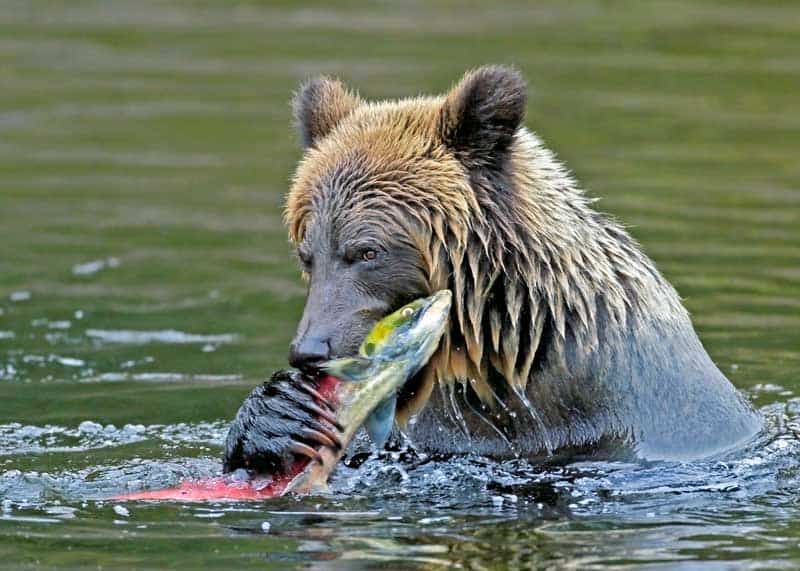
What Do Bears Eat? Guide to All Species
There are 8 species of bears of the family Ursidae. In this article, we will break down which foods make up their diet.
Here are the eight species of bears we will be looking at:
- Brown bear (Grizzly bears)
- American black bear
- Asian black bear
- Sun bear
- Polar bears
- Andean (Spectacled) bears
- Giant panda
- Sloth bear
What about all the other bears? Despite being called bears in English (or other languages) these animals aren’t scientifically classified as bears: koala bears, red panda, raccoons, coati, olingo, and olinguitos.
Bears are widespread across the Northern Hemisphere and some of the Southern Hemisphere.
All species of bears are omnivores, as they are capable of eating both berries and plants as well as other animals.
Besides just berries and meat, bears will also eat things such as roots, insects, grass, and even larvae. Each bear’s diet will vary according to its species and region. Some bears eat deer and others eat flowers and moths.
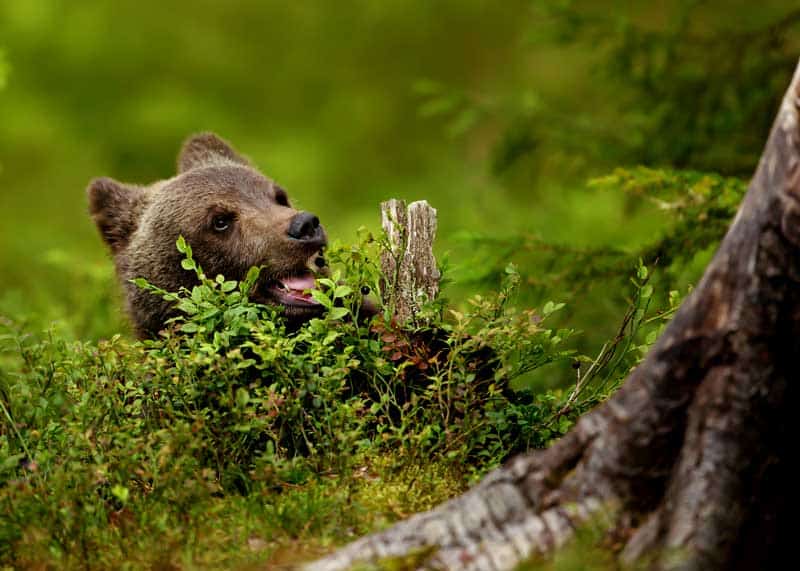
1. North American Brown Bear Diet
What Brown Bears Eat: Brown bears are not highly carnivorous, despite their reputation. According to Alaska State website, 90% of their diet is vegetation.
Foods that make up their primary diet include plants, berries, sedges, moss, and mushrooms. They also eat flowers, herbs, and roots.
Brown bears in Yellowstone National Park have been observed eating miller moths. And in volumes of up to 40,000 a day, per bear.
Each moth is estimated to be about half a calorie. Meaning that each grizzly consumes up to 20,000 calories every day of their moth-feast.
It’s no secret that brown bears definitely love to fish, and salmon is one of their favorite foods. Brown bears also eat beavers, deer, caribou, trout, and carcasses.
Brown bears are one of the most omnivorous animals. They have been recorded as eating the greatest variety of foods by any bear, according to Dr. Luke Hunter in Carnivores of the World.
The Alaskan brown bear, which is the biggest brown bear, can eat up to 80 or 90 pounds of food per day in summer and fall, and gain 3 to 6 pounds per day. This helps them to store fat for winter.
Physical Characteristics: Brown bears are about as long as black bears are, but can be between 3 to 5 feet from the ground to the shoulder. Their weight varies from 200 to 1000 pounds depending on their gender, location, and time of year.
Their color can also be a dark brown or black, or even lighter cinnamon or blonde color. They also have longer claws that they use to dig for food, and this makes it easier for them to pick fruits and catch their prey.
What Grizzly Bears Eat
Grizzly bear diet: Since grizzly bears are a subspecies of brown bears, their diet is pretty much the same.
The following information is taken from the National Park Service Website:
“They eat a variety of plants, including pine nuts, berries, grasses, glacier lilies, roots, bulbs, tubers, and dandelions… Grizzly bears spend most of their time feeding, eating up to 30 pounds of food per day to store fat for the winter.”
National Park Service
Brown bears can be attracted to campsites by the smell of food. Here’s how to keep bears away while camping.
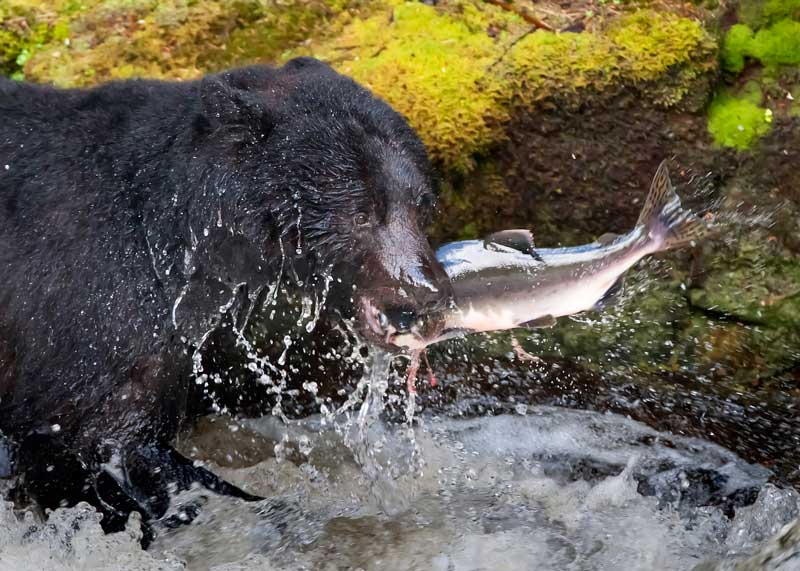
2. American Black Bear Diet
What Black Bears Eat: Black bears especially love to eat berries and larvae whenever they’re available. They need to eat a lot of these to get full though. The season and location will greatly impact their diet.
They also like roots, meat, fish, insects, grass, and other succulent plants.
They are able to kill animals like deer, elk, and moose if they are not too big. The younger the prey the easier it is, but these bears have been known to kill adult deer too.
They can kill livestock and are attracted to garbage, pet food, fruit trees, and bee hives.
This might be why black bears often live close to populated areas. And why sometimes you might see them in a backyard or trying to get into a house.
Physical Characteristics: Black bears typically grow to be 4 to 7 feet in length from their nose to their tail, and about 3 feet high from the ground to their shoulders. They have rounded ears, a short tail, and a long, brown snout.
Adult males (also called boars) can get anywhere between 150 and 400 pounds. Adult females (also called sows) tend to be an average of 175 pounds. Not all black bears have black fur; they can have brown or even white fur as well.
You can typically tell the difference between brown bears and black bears because black bears have straighter ears, a less visible shoulder hump, a straight face profile (brown bears have a slightly dished face profile), and shorter claws. Black bears are also the less aggressive of the two.
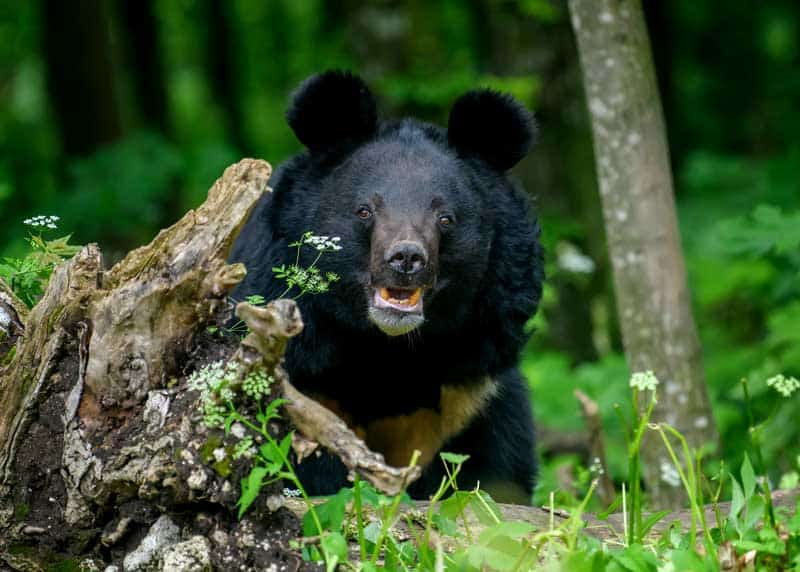
3. Asian Black Bear Diet
What Asian black bears eat: Asian black bears are omnivorous and have a broad diet.
They eat termites, grubs, larvae, insects, bees, and mushrooms. They also east grasses, seeds, honey, nuts, fruit, and grain.
And like most bears, they have also become accustomed to eating human garbage.
Different than other bear species, like pandas, Asian black bears happily gorge on whatever food source is most readily abundant at the time.
- April and May: Last years pine nuts and acorns. If there is scarcity, they’ll seek out insect larvae and hazelnuts in river valleys.
- May and June: Green vegetation and fruit.
- July to September: Pine cones, vines, grapes, and bird cherries. During spawning season, they’ll feed on dead fish.
Asian black bears are more carnivorous than other bears. They hunt ungulates (hoofed mammals), including livestock. They also hunt wild boars and water buffaloes.
Asian black bears live from Iran to Japan. They can be found in the Himalayas, parts of India, and across Southeast Asia. There are 6 subspecies of Asian black bears.
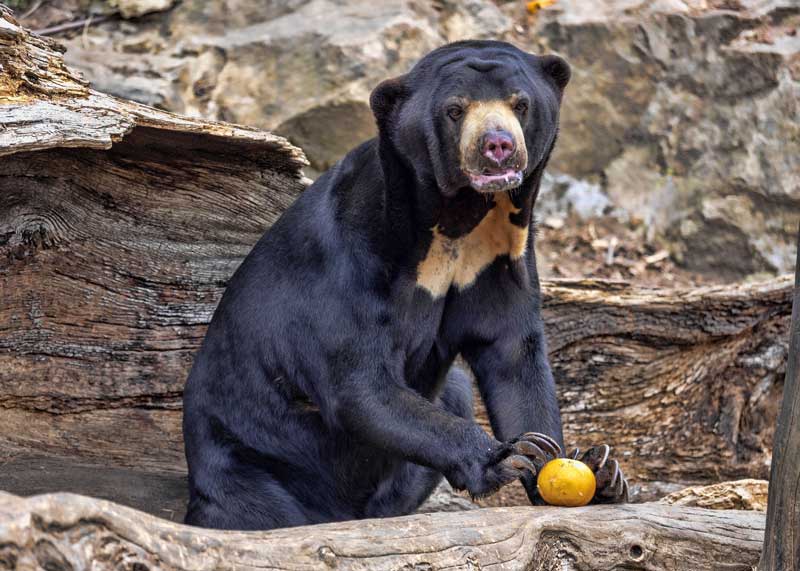
4. Sun Bear Diet
What Sun Bears Eat: Sun bears are omnivores with a broad diet. They feed on seeds, honey, and fruit. They also eat ants, beetles, larvae, termites, and bees.
They eat at least 48 species of termites and 60 ant species, according to research by the University of Cambridge (link opens pdf).
Sun bears are also known to eat reptiles, eggs, birds, and mammals. Some specific species that sun bears eat, include macaque, Argus pheasant, langur, pangolin, mouse deer, and python. While this hasn’t been observed, the remains of these animals has been found in sun bear scat.
They are foragers and feed mostly at night. When fruit is scarce, they easily switch to a more insect-based diet.
Sun bears spend more time in trees than any of the other bear species.
Physical Characteristics: Sun bears are the smallest of all bears, at just 28 inches (70 cm) to the shoulder.
Sun bears are found in Southeast Asia.
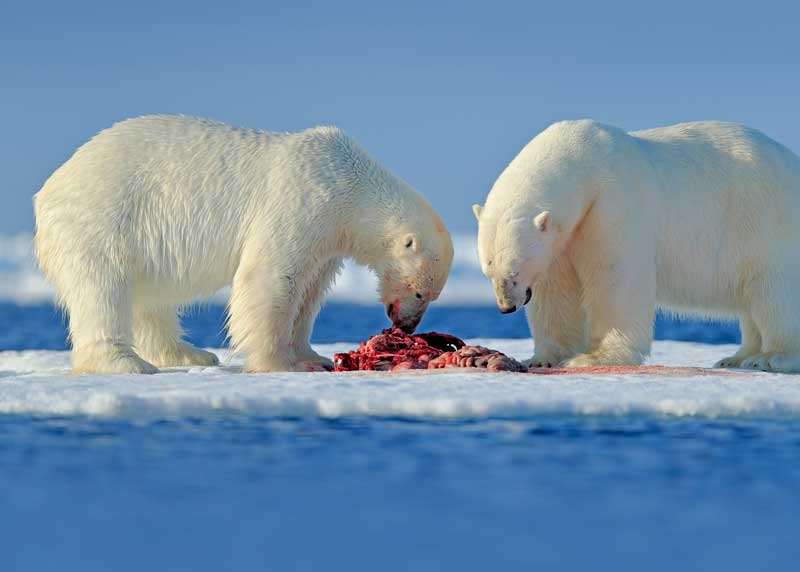
5. Polar Bear Diet
What Polar Bears Eat: Polar bears eat seals and they are their primary food source.
But they will also eat larger mammals (reindeer, walrus, muskox) and smaller animals (crabs, rodents, birds), and even other polar bears.
They have been known to eat vegetation, like kelp, berries, and roots, although they make up a nominal amount of their overall diet.
Polar bears are strong swimmers and patient hunters. They have specialized skills to catch seals and focus on seals when they are plentiful.
Physical Characteristics: These bears can get up to 8 feet in length and 5 feet tall. Males can reach up to 1700 pounds, while females typically stay at about 1000 to 1200.
They have a long neck, a smaller head, and a short tail. All polar bears have white fur, so as to blend in better with their arctic environments.
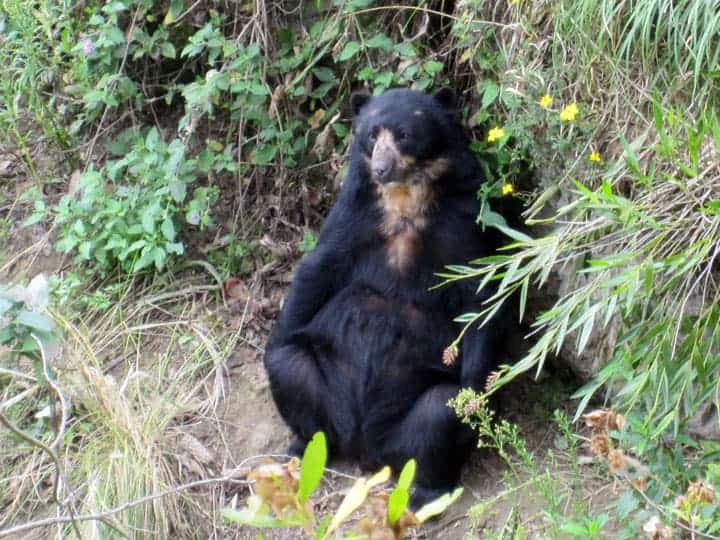
6. Andean (Spectacled) Bear Diet
What Andean Bears Eat: Like all bears, the Andean bear is an omnivore. But just 5-7% of its diet is meat, according to the book, Walker’s Mammals of the World.
It eats all sorts of fruits, bromeliads, palm leaves, and even things like cacti. They will also eat orchid bulbs and bark.
Andean bears may hunt and kill a variety of prey animals, but they seem to prefer to scavenge easier targets like plants or livestock.
Andean bears are the only bear species in South America. Because it lives in warmer climates, all types of food are available to it year-round.
Physical Characteristics: Andean bears have unique appearances compared to other bears, although there are similarities in their diets. These bears are mid-sized and measure between 4-6 feet long. The males are considerably larger than the females, although both of them have black or dark brown fur.
They are nicknamed “The Spectacled Bear” because of the light-colored rings of fur around their eyes.
This pattern is unique to each bear, which helps people tell them apart. Learn more about Andean bears.
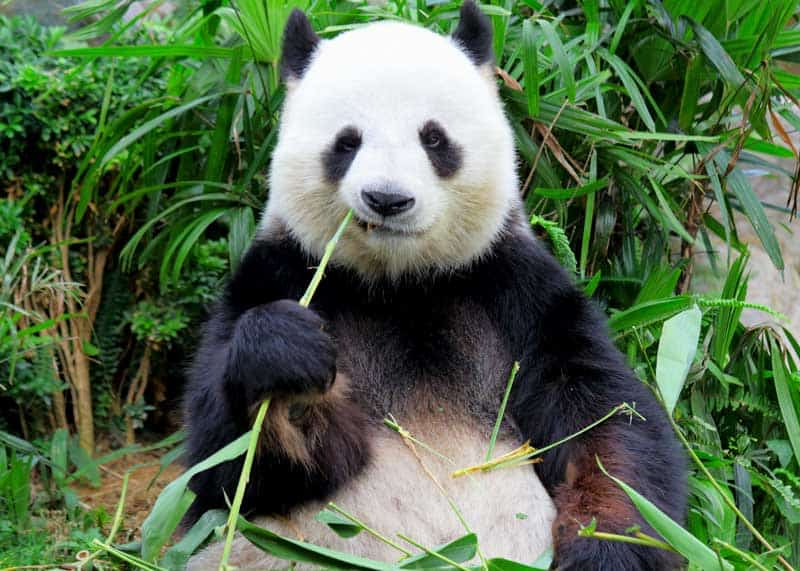
7. What Giant Pandas Eat
Pandas eat 20 to 40 pounds of bamboo every day. Pandas are folivores, a specialized herbivore that east mainly leaves.
It is because of their inefficient digestive progress, they require such high volumes of food to meet their nutritional requirements.
Because of eating so much food, they spend 10 to 16 hours a day feeding and looking for food.
Panda bears eat 99% bamboo shoots and leaves. The other 1% of its diet consists of other grasses, tubers, and roots, and sometimes meat (rodents, birds, and carrion).
In captivity, pandas will also eat fish, eggs, oranges, and bananas, according to Animal Planet.
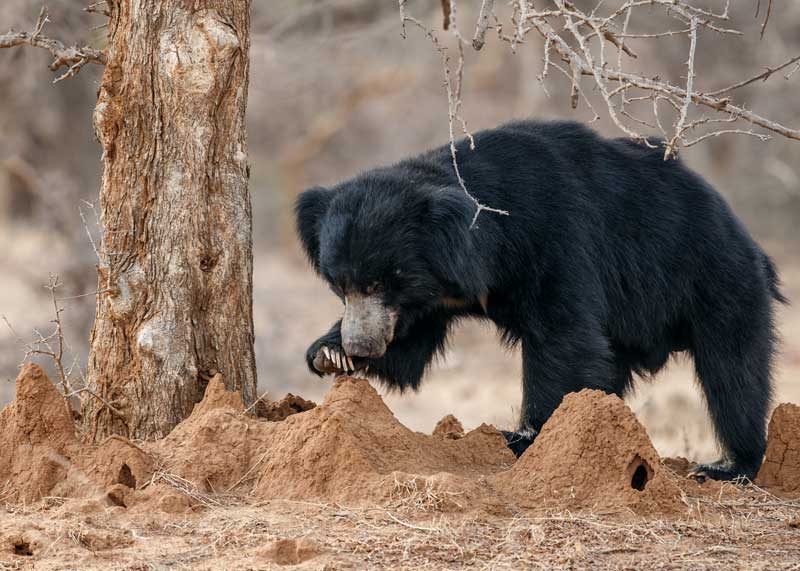
8. Sloth Bear Diet
What Sloth Bears Eat: Sloth bears are omnivores, but don’t hunt in a typical manner. Sloth bears primarily eat bugs, grubs, and termites. They also east sugar cane, honey, mangos, and petals from the pudding-pipe tree.
Sloth bears are excellent termite and ant hunters. They are also known as labiated bear because of their specialized mount and long lower lip – perfect for consuming insects.
They are built for consuming insects. They can smell the mound. They use their claws to open the insect mound and begin sucking them up – creating a sound that can be heard 590 feet (180 m) away.
- During monsoon season, sloth bears gorge on fresh fruit – like mango, figs, jackalberry, and flowers.
- During the rest of the year, 95% of their diet comes from insects. They also eat honey from honeycomb they knock out of trees.
When food is scarce, they will eat dead animals. And raid crops from nearby farms.
In captivity (Smithsonian’s National Zoo) they eat “a dry-food mixture designed for omnivores, plus fruits and vegetables, such as apples, sweet potatoes, and grapes.”
Sloth bears are native to the Indian subcontinent. There are two subspecies: Indian sloth bear and Sri Lankan sloth bear.
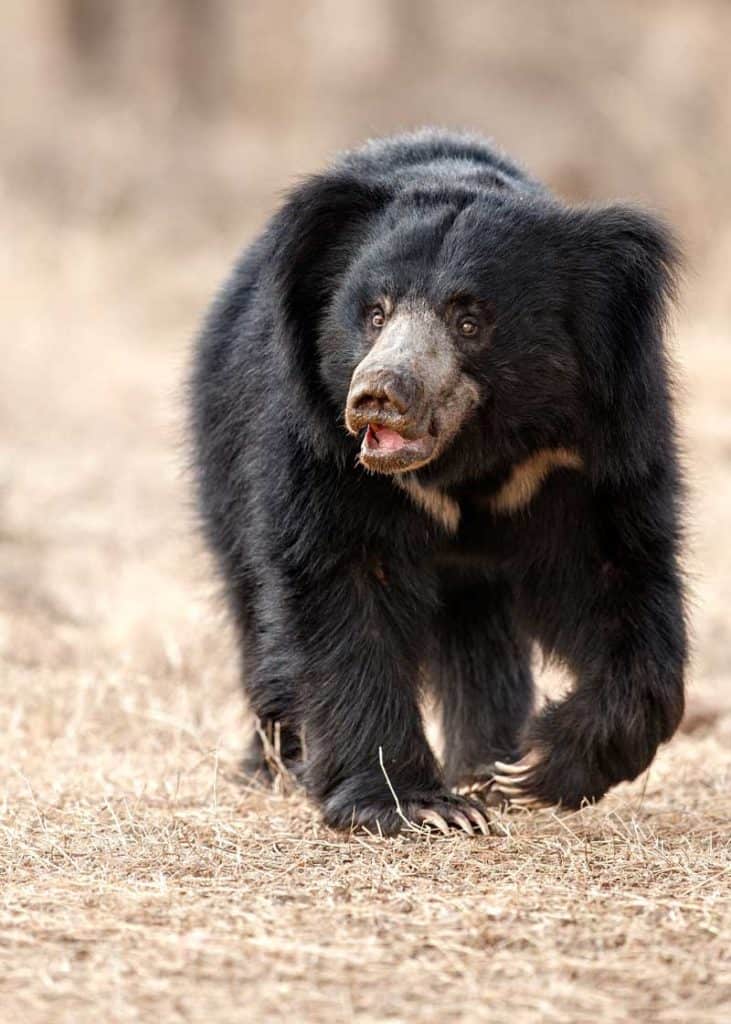
What Do Baby Sloth Bears Eat?
Sloth bear cubs eat a sticky material known as “bear’s bread”. To make it, the mother regurgitates a liquid mixture of partially-digested wood apples, jack fruit, and honeycomb.
This substance hardens into a dark yellow product that is then given to the cubs.
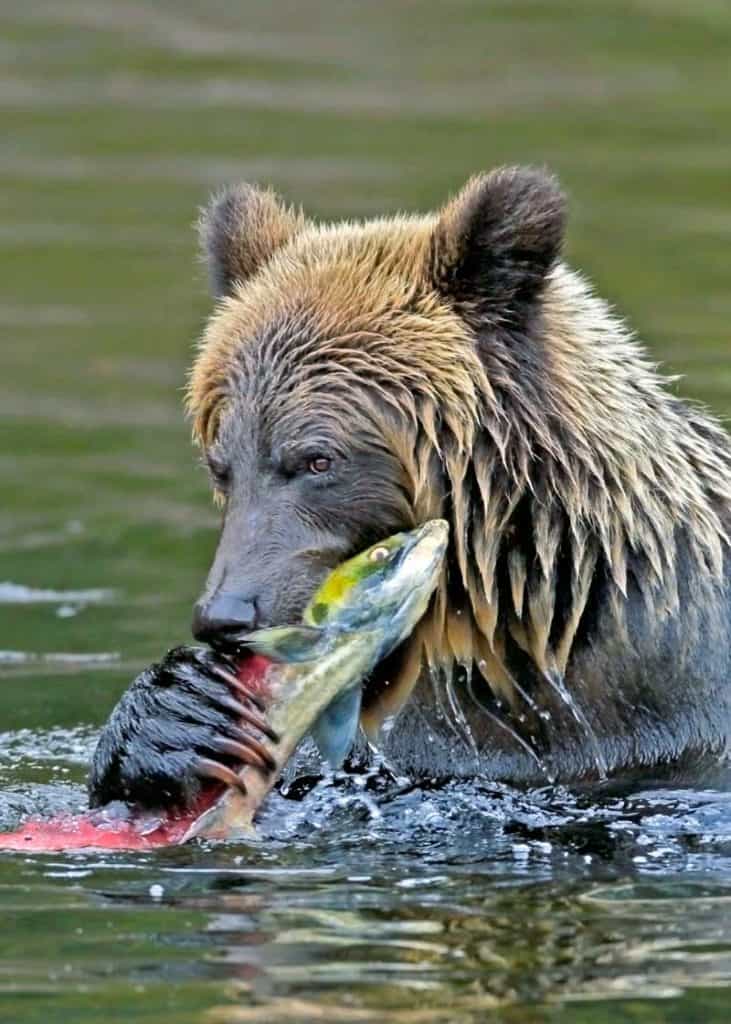
Interested in the diet of other animals?
- Do Squirrels Eat Meat?
- What Do Elephants Eat? All 3 Species
- What Do Rhinos Eat? 5 Species Guide
- What Do Giraffes Eat?
- What Do Kangaroos Eat?






